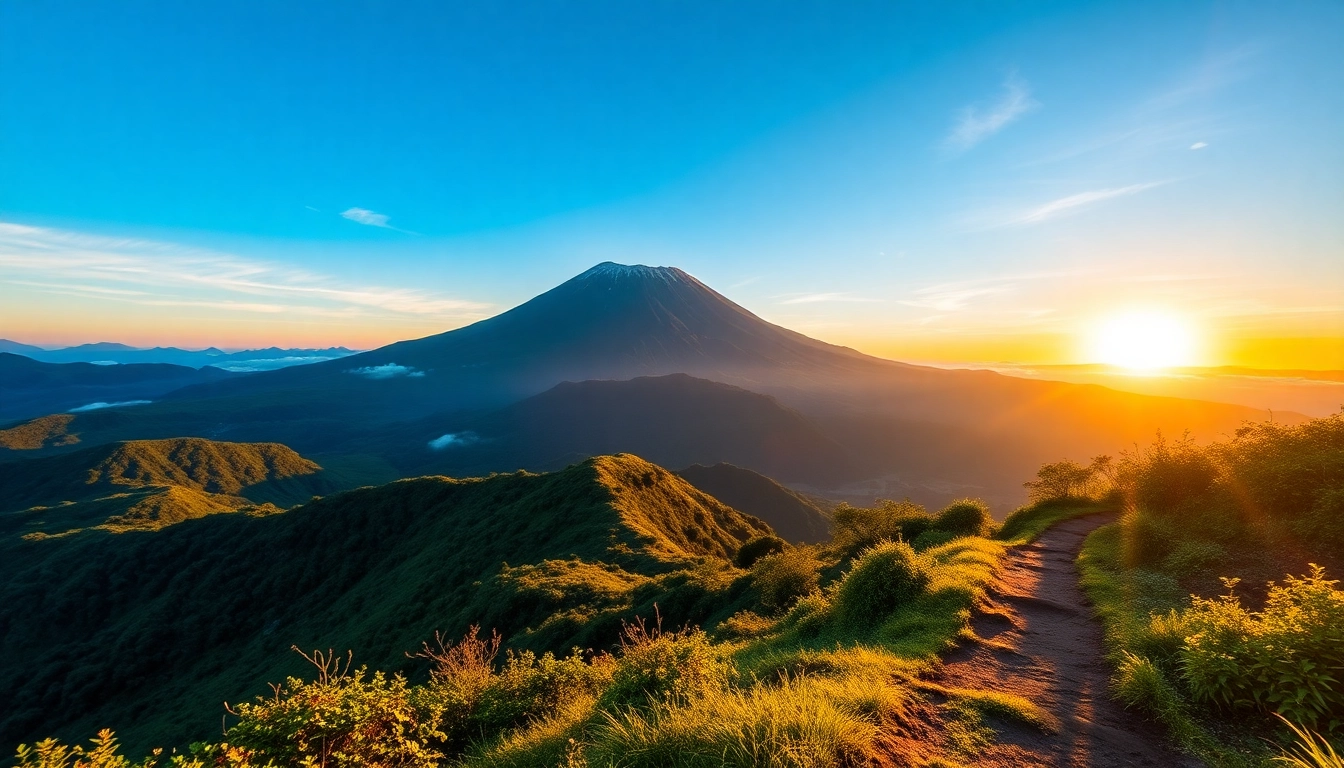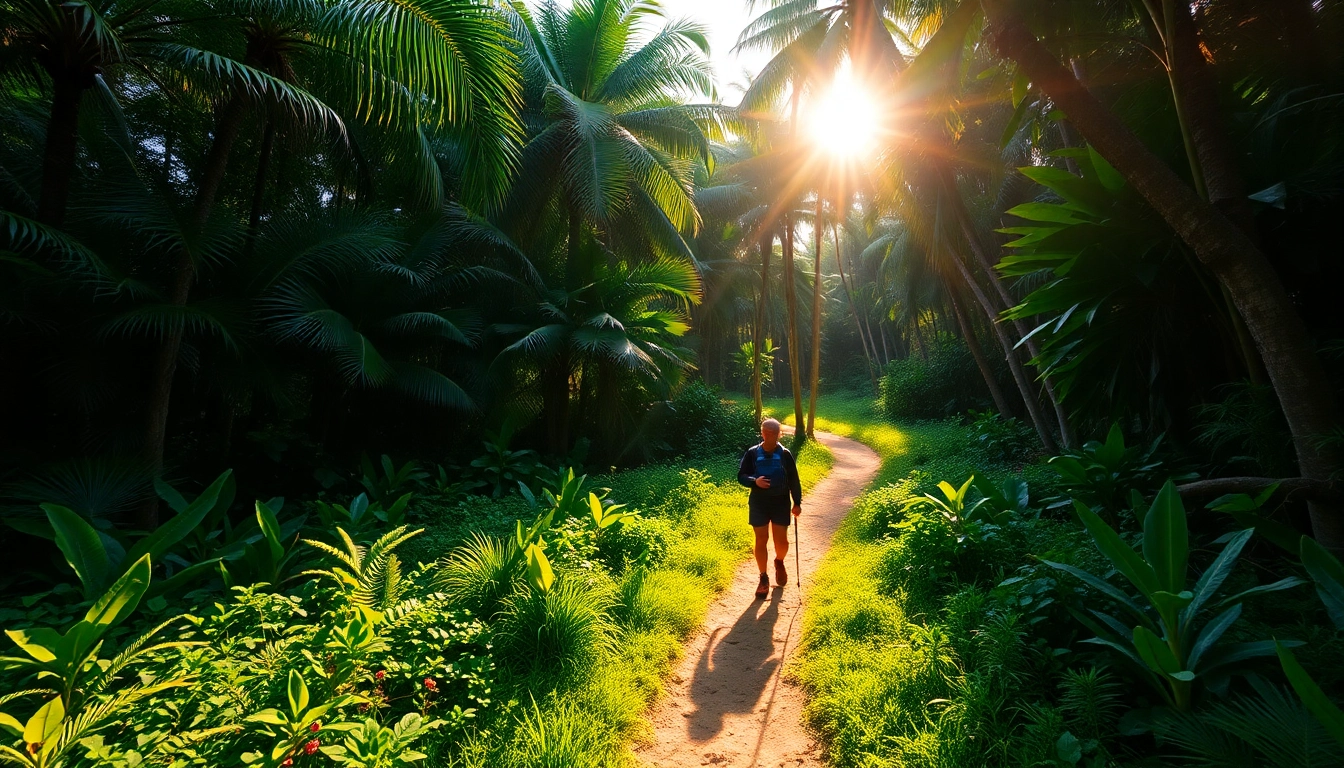Introduction to Mount Rinjani: Indonesia’s Second Highest Volcano
Nestled on the island of Lombok in Indonesia, Mt. Rinjani stands as an awe-inspiring natural wonder and a major destination for adventure enthusiasts and nature lovers alike. As the second highest volcano in Indonesia, with an elevation of 3,726 meters (12,250 feet), Rinjani offers a compelling blend of geological marvels, breathtaking landscapes, and cultural richness. Its prominence not only stems from its physical stature but also from its significance in local history, ecology, and tourism. Whether you are seeking a challenging trek, a spiritual journey, or a scenic escape, Mount Rinjani provides a multifaceted experience that leaves a lasting impression. This comprehensive guide aims to illuminate every aspect of this majestic volcano—from its geological origins to practical tips for your adventure.
Geographical Location and Significance
Mount Rinjani is situated on the island of Lombok, part of the West Nusa Tenggara province in Indonesia. Covering approximately 41,330 hectares within the Rinjani National Park, it commands the northern part of Lombok and forms a critical part of the region’s geological and ecological landscape. The mountain resides within a major bio-geographical transition zone known as Wallacea, which features a diverse array of flora and fauna due to the intersection of Asian and Australasian biodiversity zones.
The volcano’s strategic location influences both the climate and vegetation zones on the island, creating lush rainforests at lower elevations and alpine ecosystems near the summit. Its influence extends to local communities, culture, and biodiversity, making it a focal point for conservation efforts and sustainable tourism development.
Historical Eruptions and Volcanic Activity
Rinjani is an active stratovolcano with a history marked by significant eruptions. Its most recent major eruptive event occurred in 2015, which lasted for two months, causing ash plumes that reached up to 6 kilometers into the atmosphere and lava flows that reshaped parts of the mountain. Prior to that, eruptions have occurred periodically, shaping the surrounding landscape and influencing local settlements.
The volcano’s activity is monitored closely by Indonesia’s Geological Agency, given its potential for future eruptions. Despite these active periods, Rinjani’s eruptions have largely been characterized by ash emissions and lava flows rather than catastrophic destruction. This activity affirms the necessity for proper safety measures, guided tours, and awareness among trekkers and locals alike.
The 2015 eruption notably impacted local tourism, temporarily closing the national park, but also prompted efforts to implement better monitoring and disaster preparedness plans. Understanding the volcano’s eruptive patterns helps both researchers and visitors to better appreciate its dynamic nature and respect safety protocols.
Unique Features of Mount Rinjani
Crater Lake and Caldera
One of Rinjani’s most iconic features is Segara Anak, the stunning crater lake nestled within the caldera at approximately 2,000 meters elevation. The lake spans about 10 square kilometers and is renowned for its vibrant blue waters, contrasting dramatically with the surrounding volcanic hills and lush greenery. Legend and local belief regard the lake as sacred, with cultural sites nearby that add spiritual significance to the landscape.
Hot Springs and Geothermal Activity
Around the mountain, especially near the crater lake, visitors can find natural hot springs that are popular for relaxation and therapeutic benefits. These geothermal features are evidence of ongoing volcanic activity and contribute to the diverse ecosystem. The hot springs are easily accessible from various trekking routes, providing a natural oasis amidst the rugged terrain.
Rich Biodiversity
Mount Rinjani’s protected status within the national park preserves a remarkable variety of flora and fauna. Dense rainforests at the lower elevations host species such as ebony, sandalwood, and various orchids, whereas higher altitudes support unique alpine plants like Rinjani edelweiss. Wildlife such as the Lombok monkey, various bird species, and reptiles thrive in this ecological niche, making Rinjani a key conservation area.
Climbing Mount Rinjani: Routes, Guides, and Preparation
Popular Trekking Routes and Difficulty Levels
Mount Rinjani offers several trekking routes catering to different levels of experience and adventure preferences:
- Sembalun Route: Known for its scenic mountain views and relatively gentle incline, this route is favored by many trekkers. It typically takes 2-3 days to reach the summit, with breathtaking vistas along the way.
- Senaru Route: This route begins from the north side, passing through lush forests and waterfalls. It is more challenging and suited for experienced hikers aiming for a more immersive wilderness experience.
- Torean Route: The most demanding route with steep ascents, ideal for seasoned climbers seeking adventure and a shorter, intense climb.
Each path varies in difficulty, altitude gain, and scenic highlights, so choosing the right trail depends on your fitness, experience, and time available.
Guides, Permits, and Essential Equipment
Due to the challenging terrain and volcanic risks, hiring a local guide is highly recommended for safety and navigation. Guides are well-trained, often include porters, and know the terrain intricacies. Permits are mandatory for trekking, obtainable through local authorities or tour operators, ensuring legal compliance and park conservation support.
Essential equipment includes sturdy hiking boots, layered clothing for varying temperature zones, trekking poles, headlamps, waterproof gear, and sufficient food and water supplies. Additionally, don’t forget to carry a first aid kit, GPS or maps, and personal protective items for weather fluctuations.
Cost and Budgeting for Your Rinjani Trek
Planning your budget involves factoring in guide fees, permits, equipment, accommodation, and additional expenses such as transportation. Guides typically charge around Rp. 350,000 (approx. USD 25) per day, with additional costs for porters. Permits cost approximately Rp. 150,000, and package tours can vary depending on inclusions.
For a 3-4 day trek, expect to spend between USD 200 and USD 400 per person, covering guides, support staff, and essentials. Budgeting ahead ensures a smooth experience without surprises.
Things to Know Before Trekking Mount Rinjani
Best Seasons and Weather Conditions
The optimal time for trekking is during the dry season, which spans from April to October. During these months, weather conditions are more stable with minimal rain, clearer skies, and less risk of landslides or slippery trails. The peak period coincides with July and August, attracting many visitors, so early booking is advised.
Rainy season (November to March) tends to bring frequent showers, higher humidity, and increased risks. Temperatures vary from 20°C at lower elevations to near freezing near the summit, so layered clothing is essential regardless of season.
Health and Safety Precautions
Because of the high-altitude environment, altitude sickness is a potential concern. It is advisable to acclimate gradually, hydrate sufficiently, and listen to your body. Trekking with experienced guides ensures prompt assistance during emergencies. Vaccinations against tetanus and hepatitis are recommended, along with carrying necessary medications for altitude, cold, and dehydration.
It’s also vital to be aware of volcanic activity — always follow guidance from park authorities and heed any warnings or alerts regarding eruptions, ash clouds, or road closures.
Environmental Responsibility and Conservation
Visitors are encouraged to practice Leave No Trace principles. This includes packing out all trash, avoiding damage to flora, and respecting local communities and sacred sites. Staying on designated paths prevents erosion, and supporting local guides and businesses promotes sustainable tourism.
Highlights and Attractions in Rinjani National Park
Scenic Waterfalls, Lakes, and Hot Springs
Along the trek, adventurers encounter numerous natural attractions such as Sendang Gila Waterfall, Tiu Kelep Waterfall, and the hot springs of Taman Narmada. These sites offer refreshing breaks and photogenic views. The crater lake, Segara Anak, is the crown jewel, with its vibrant waters and surrounding lush scenery.
These features not only enhance the trekking experience but also contribute to the park’s ecological diversity and appeal to eco-tourists.
Flora and Fauna Adventure Encounters
Exploring the park unveils a rich tapestry of wildlife and plant life. Birdwatchers can spot hornbills, parrots, and other endemic species. In the forests, look out for Lombok monkeys, and in the higher zones, alpine plants like Edelweiss flourish. Conservation efforts aim to protect these species amid increasing tourism.
Cultural and Local Community Experiences
Small villages near the park allow visitors a glimpse into local Sasak and Balinese cultures. Participating in traditional ceremonies or sampling local cuisine enriches the adventure. Establishing respectful engagement with community members fosters sustainable tourism and preserves indigenous traditions.
Planning Your Visit: Tips for a Successful Rinjani Climb
Accommodation and Support Services
Support services include basic guesthouses or homestays in the nearby villages of Sembalun or Senaru, serving as starting points for treks. Camping is permitted within designated areas of the national park, and some tour operators offer comprehensive packages that include meals, gear, and even pre-trek training.
Travel Tips and Emergency Contacts
Always notify someone about your itinerary and expected return. Carry a fully charged mobile phone with relevant emergency contacts. Local authorities and park ranger stations are available for urgent assistance. Travel insurance covering high-altitude trekking and natural disasters is strongly recommended.
How to Maximize Your Rinjani Experience
To truly enjoy the journey, prepare physically through endurance training, learn about the cultural significance of sites within the park, and plan your trek during optimal weather windows. Taking time to acclimate and respecting the environment ensures a memorable and safe adventure.

